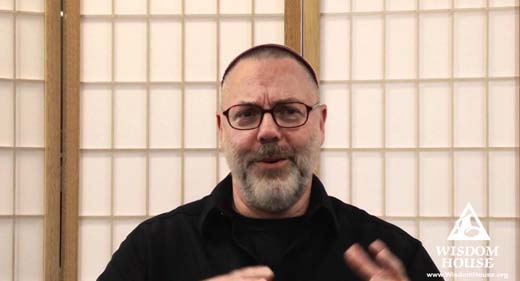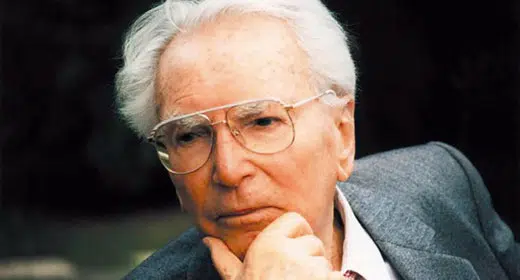Rabbi Rami Shapiro offers a thought-provoking response to a recent atheist billboard:
 On the Jersey side of the Lincoln Tunnel atheists have posted a billboard featuring the three Magi approaching the manger. The text reads, “You Know It’s a Myth. This Season Celebrate Reason.” . . . If I had the money I would post my own Magi billboards. But I would change the tagline from “You Know It’s a Myth. This Season Celebrate Reason” to “You Know It’s a Myth. This Season Celebrate the Imagination.”
On the Jersey side of the Lincoln Tunnel atheists have posted a billboard featuring the three Magi approaching the manger. The text reads, “You Know It’s a Myth. This Season Celebrate Reason.” . . . If I had the money I would post my own Magi billboards. But I would change the tagline from “You Know It’s a Myth. This Season Celebrate Reason” to “You Know It’s a Myth. This Season Celebrate the Imagination.”
And he explains how this would touch his own religious tradition, Judaism:
If I insist the Exodus is history I have to deal with a murderous God and a host of extraneous, harmful, and self-serving miracles. But if I accept it as myth I am dealing with the liberation of self from enslavement to power; the suffering is mine, the deaths are mine, and the liberation is mind. Myth is meant to [be] lived rather than believed in; it is about the inner life not the political one.
Okay, so jihad is self-mastery—the holy war of a nonviolent spirit—and the old stories about the gods are, every one of them, just pretend.
God bless us, every one.
Would that all members of the clergy—Muslim, Christian, Jewish, and Hindu—arrive at these sane conclusions and ease their congregations toward them.
But those who start speaking like Rami Shapiro struggle to keep their audience, don’t they? Why is that?
And if Rami Shapiro wants to celebrate imagination at holidays (as opposed to reason or faith), then humanities professors might start asking uncomfortable questions like these:
- Why is the clergy more qualified than literary and art critics to deliver weekend sermons?
- Why should people keep the old religious stories, songs, and iconography at the collective imaginal center, and not make room for others?
If the goal, in other words, is reflection at holidays on one’s inner life in imaginative ways, why isn’t Kate Chopin as good as St Luke?
I’m thinking specifically of Kate Chopin’s short story, “The Story of an Hour” (1894), in which her protagonist, Mrs Mallard, having just learned that she has lost her husband in a train accident (or so she is told), flees from the news to an upstairs bedroom and locks herself in. There she settles into a big comfy chair and stares silently out of an open window. Expecting grief to visit her, her solitude nevertheless delivers a surprise:
There was something coming to her and she was waiting for it, fearfully. What was it? She did not know; it was too subtle and elusive to name. But she felt it, creeping out of the sky, reaching toward her through the sounds, the scents, the color that filled the air [from her open window].
And what was it exactly?:
She was beginning to recognize this thing that was approaching to possess her, and she was striving to beat it back with her will—as powerless as her two white slender hands would have been.
When she abandoned herself a little whispered word escaped her slightly parted lips. She said it over and over under her breath: ‘free, free, free!’
This is a rather naughty revelation to have on learning of a spouse’s death, but Chopin’s story of Mrs Mallard’s encounter with solitude illustrates the danger and the promise of it: you’ll get visitations at your window, but you can’t guarantee what might come in. Reflecting on Mrs Mallard’s solitude surely could yield as good a sermon as the gospel stories of Jesus praying in the garden at Gethsemane or God commanding Pharoah through Moses to “Let My people go,” couldn’t it?
I suppose I’m offering a sermon now.
And, really, this is the problem, isn’t it? When it comes right down to it, members of the clergy have just one truly firm grip on their congregations, and that grip is credulity. Any member of the clergy who drops the literalness of the old stories—drops what Dostoevsky so famously referred to in The Brothers Karamazov as “miracle, mystery, and authority”—risks his or her job, for there are other places to nourish the imagination, especially if you’re not going to take the old stories especially seriously.
Fundamentalists, of course, take the old stories seriously—very seriously—and literature and art professors take the new stories seriously. Caught in the middle, what’s a liberal cleric to do?
Let my people go, indeed.
I admire Rabbi Rami Shapiro. It’s a brave thing that he is saying. He’s letting something go that ought to be let go. But, like Mrs Mallard, there’s no telling what might come to him from the window that he has opened. And if he doesn’t know Kate Chopin’s story, and reads it, he’ll discover that he’s chosen a path that is not for the faint of heart.
Here’s a bit more truth-telling from the rabbi:
The characters found in myths represent aspects of our own psyches. The Virgin Birth is neither a miracle nor a biological act of parthenogenesis (asexual reproduction). It is a story about how something new and potentially redemptive comes into the world. As a myth Christmas speaks to all humans. As science and history it makes no sense at all.
If we reclaimed the power of myth, and understood its role in our lives, we could reclaim the world’s religions as keepers of myth and train clergy to be guides to myth who can help us live out the mythic and imaginal dimensions of our lives through acts of compassion and contemplative spiritual practice.
In other words, let’s have better religion through literature, and literature majors should be the guides and keepers of the mythic flame, of moral sympathy, and of spiritual practice. Hmm.
It’s hard to imagine literature majors managing to do worse than the current sorry crop of global clergy. But, as a lit person myself, if I ever sought a paying position that is so obviously prone to pretense, hypocrisy, and abuse, then I’d at least want to read again George Orwell’s Animal Farm. Wouldn’t you?








































